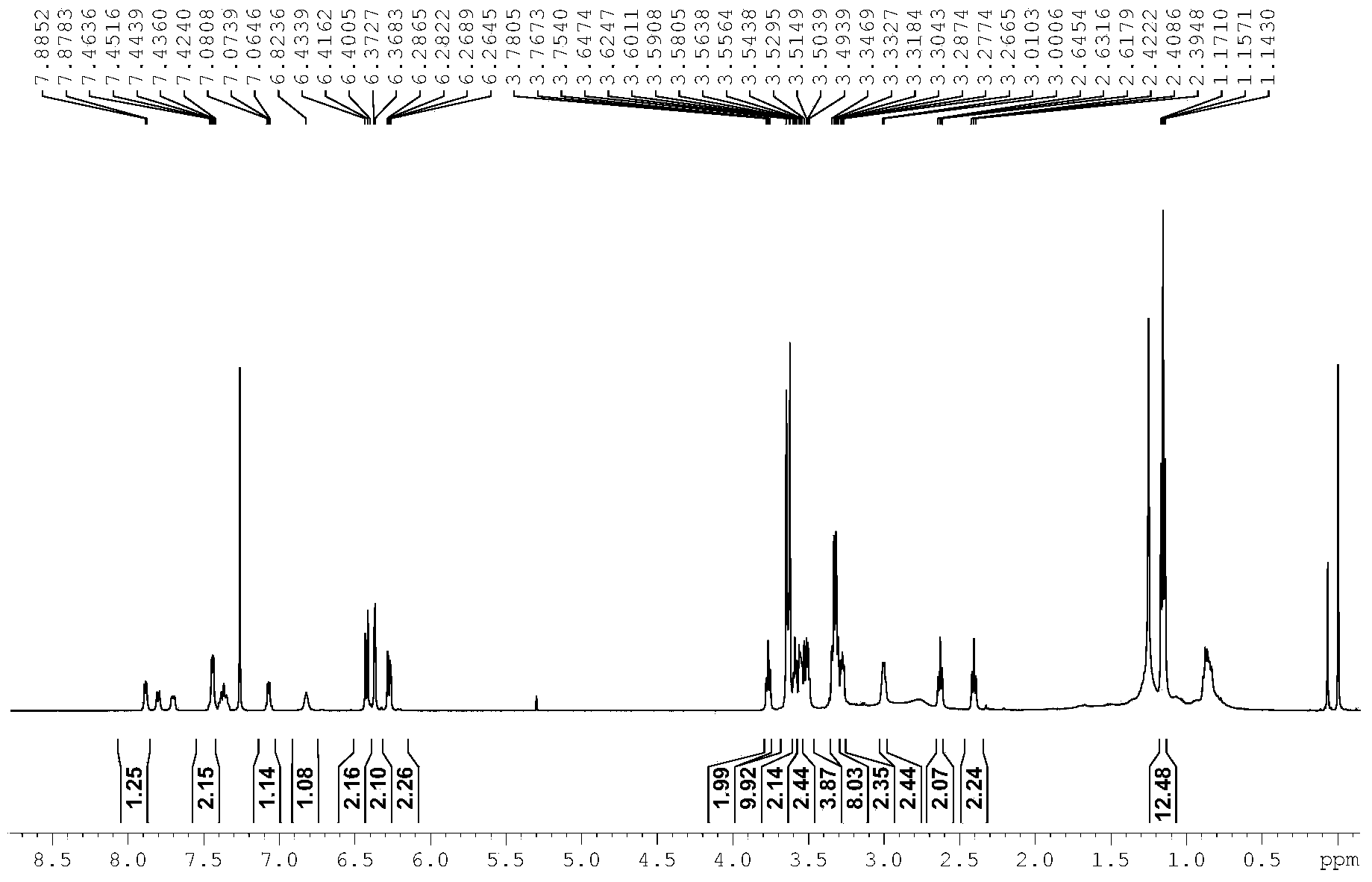Rhodamine B-based fluorescent sensor, preparation and application thereof
A fluorescence sensor and complete reaction technology, applied in the direction of fluorescence/phosphorescence, luminescent materials, chemical instruments and methods, etc., can solve the problems of lack of specificity, inability to prove that it only contains iron or mercury ions, and inability to be widely used, etc. Achieve the effects of strong specificity, wide absorption wavelength range, and high quantum yield
- Summary
- Abstract
- Description
- Claims
- Application Information
AI Technical Summary
Problems solved by technology
Method used
Image
Examples
Embodiment 1
[0027] A fluorescent sensor based on rhodamine B, its structural formula is as follows:
[0028]
[0029] The preparation method of the above-mentioned fluorescent sensor is as follows:
[0030]
[0031] Compound A was synthesized according to the method reported in RSCAdv., 2014, 4, 2563, and compound B was synthesized according to the method reported in Bioorg. Med. Chem. 2005, 13, 3673. Then 0.22mmol of compound B was dissolved in 5mL of dichloromethane, followed by adding 0.66mmol of dicyclohexylcarbodiimide, 0.44mmol of 1-hydroxybenzotriazole, and 0.44mmol of N,N-diisopropylethylamine. Stir at room temperature until completely dissolved, then add 0.44 mmol of compound A, and continue stirring at room temperature for 12 hours until the reaction is complete. After purification, a red solid was obtained, namely compound C, the target product was a rhodamine B-based fluorescent sensor, and the yield was about 47%.
[0032] The characterization results are as follows: ...
PUM
 Login to View More
Login to View More Abstract
Description
Claims
Application Information
 Login to View More
Login to View More - R&D
- Intellectual Property
- Life Sciences
- Materials
- Tech Scout
- Unparalleled Data Quality
- Higher Quality Content
- 60% Fewer Hallucinations
Browse by: Latest US Patents, China's latest patents, Technical Efficacy Thesaurus, Application Domain, Technology Topic, Popular Technical Reports.
© 2025 PatSnap. All rights reserved.Legal|Privacy policy|Modern Slavery Act Transparency Statement|Sitemap|About US| Contact US: help@patsnap.com



